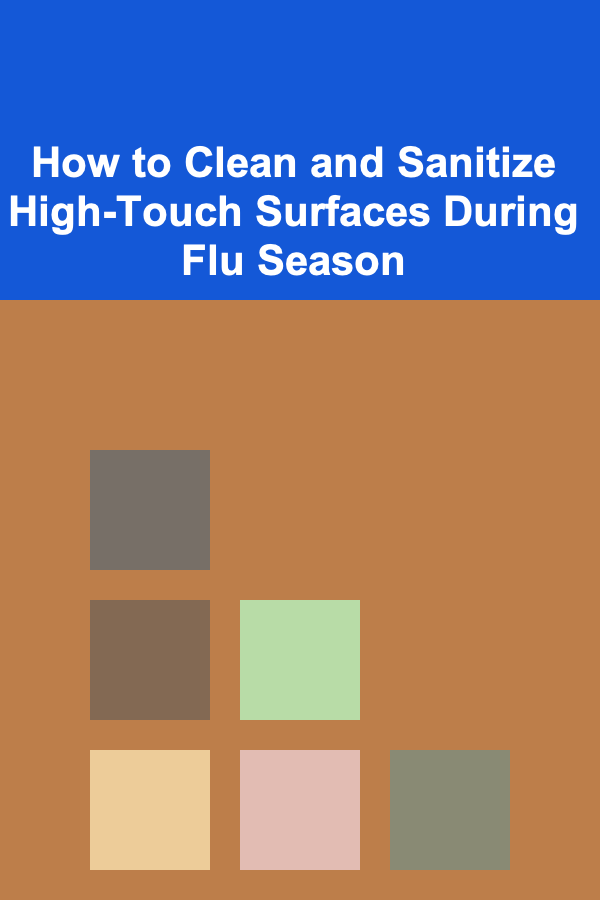
How to Keep Track of Expiration Dates for Beauty Products
ebook include PDF & Audio bundle (Micro Guide)
$12.99$7.99
Limited Time Offer! Order within the next:

In the beauty world, maintaining the efficacy and safety of products is crucial. Just like food, beauty products have expiration dates that can impact their performance and, most importantly, your skin's health. Using expired products may lead to irritation, breakouts, or other unwanted side effects. Therefore, keeping track of expiration dates is essential for any beauty enthusiast. This comprehensive guide will explore why monitoring expiration dates is vital, how to effectively track them, practical tips for managing your collection, and innovative strategies to ensure you always use products safely.
Understanding the Importance of Expiration Dates
1. Safety Concerns
Many beauty products contain active ingredients that can degrade over time. Using these products past their expiration date may cause skin reactions, allergies, or infections. For example:
- Skin Care: Ingredients like retinol and vitamin C can lose potency, rendering them ineffective.
- Makeup: Bacterial growth can occur in products like mascara and liquid eyeliner, leading to potential eye infections.
2. Product Efficacy
Even if a product doesn't pose a safety risk, its effectiveness can diminish. Outdated products may not deliver the desired results, leading to wasted money and disappointment.
3. Hygiene Considerations
Expired products can become breeding grounds for bacteria and mold, particularly in cream-based formulas. Regularly checking expiration dates helps maintain a hygienic beauty routine.
4. Financial Responsibility
Investing in high-quality beauty products can be costly. Keeping track of expiration dates ensures you get the most out of your investment by using products before they spoil.
5. Environmental Impact
Using products until their expiration date reduces waste. Monitoring your collection helps you consume more responsibly, thus lessening your environmental footprint.
Recognizing Expiration Labels
Understanding how to read expiration labels is essential for effective tracking. Here's a breakdown of different types of labeling you might encounter:
1. Expiration Date
Some products will have a clearly defined expiration date printed on the packaging. This is usually found on the bottom or back of the container.
2. Period After Opening (PAO)
The PAO symbol, represented by a jar icon with a number inside (e.g., 6M for six months), indicates how long a product remains safe to use after opening. For example, if you open a moisturizer with a 12M PAO, it should ideally be used within 12 months.
3. Best Before Date
Some products, especially skincare, may state a "best before" date rather than an expiration date. This indicates when the product is expected to perform optimally, but it might still be usable afterward.
Step-by-Step Guide to Tracking Expiration Dates
Step 1: Organize Your Beauty Collection
Before tracking expiration dates, take stock of your entire beauty collection. Proper organization will make it easier to monitor products moving forward.
1. Gather All Products
Collect all beauty products from various locations---bathroom cabinets, drawers, travel bags, and counters.
2. Clean and Categorize
Once everything is gathered, clean your products and categorize them:
- Skincare: Cleansers, moisturizers, serums, masks.
- Makeup: Foundations, lipsticks, eyeliners, eyeshadows.
- Haircare: Shampoos, conditioners, styling products.
- Tools: Brushes, applicators, and sponges.
Step 2: Assess Expiration Dates
As you sort through your collection, take note of each product's expiration or PAO date.
1. Check Labels
Use a magnifying glass if necessary to find expiration dates or PAO symbols. If no information is present, consider the following general guidelines:
- Foundation: Liquid foundations typically last 1-2 years; powder foundations can last up to 3 years.
- Mascaras: Generally last 3-6 months.
- Lip Products: Lipsticks usually last around 1-2 years; glosses can vary but often last about a year.
- Skincare Creams: Typically last 6 months to 1 year.
2. Create a Record
Create a spreadsheet or document listing each product along with its expiration or PAO date. Include columns for:
- Product Name
- Brand
- Category
- Expiration Date
- Date Opened (if applicable)
- Notes (e.g., skin reactions, favorite products)
Step 3: Set Up Tracking Methods
There are several ways to track expiration dates effectively:
1. Digital Tools
Using digital tools can simplify tracking:
- Spreadsheets: Utilize Google Sheets or Microsoft Excel to create an inventory list.
- Apps: Consider beauty inventory apps designed for tracking expiration dates, such as "Beauty Keeper" or "My Makeup."
2. Physical Tracking
If you prefer a physical method, consider:
- Labels: Use label makers to print expiration dates and attach them directly to the product.
- Sticky Notes: Place sticky notes on shelves or drawers indicating which products need attention.
Step 4: Establish a Routine
Maintaining a routine will help ensure that you're always aware of expiration dates:
1. Monthly Checks
Schedule monthly reviews of your collection to ensure you're aware of any approaching expiration dates.
2. Daily Reminders
Set daily reminders on your phone or calendar app to prompt you to check specific products or categories.
3. Seasonal Reviews
Consider doing a seasonal declutter, checking for expired items and re-evaluating your collection.
Step 5: Proper Disposal of Expired Products
Knowing how to dispose of expired products is just as important as tracking their dates:
1. Recycling Options
Research local recycling centers to see if they accept beauty products. Many regions have designated programs for recycling cosmetic containers.
2. General Trash
For products that can't be recycled, dispose of them in the general trash. Ensure liquid products are secure to prevent leaks.
3. Hazardous Waste
Some beauty products may contain chemicals that require special disposal methods. Research hazardous waste disposal in your area for proper procedures.
Step 6: Educate Yourself About Ingredients
Understanding the ingredients in your beauty products can help you get a better grasp on their shelf life and stability:
1. Active Ingredients
Learn about the stability of key active ingredients in your products. For example:
- Vitamin C: Known for its instability; products containing this ingredient should be used within 3-6 months after opening.
- Retinol: Often has a shelf life of about one year once opened.
2. Natural vs. Synthetic
Natural products may have shorter shelf lives due to the absence of preservatives, so pay extra attention to these.
Step 7: Share Information
Sharing knowledge about expiration dates can foster a community of responsible beauty enthusiasts:
1. Friends and Family
Talk to friends and family about the importance of tracking expiration dates. Sharing your own experiences can encourage them to do the same.
2. Online Communities
Engage in beauty forums or social media groups to share tips and experiences related to product expiration management.
Tips for Effective Management of Expiration Dates
1. Implement a "First In, First Out" System
When purchasing new products, place them behind older ones to ensure the older products are used first.
2. Use Clear Containers
Store beauty products in clear containers or bins to increase visibility and make it easier to monitor what's inside.
3. Label Everything
Use clear labels on both products and storage containers to indicate expiration or PAO dates. It serves as a quick reference.
4. Avoid Over-Purchasing
Be mindful of how many similar products you have. Stick to a budget and avoid buying products unless you truly need them.
5. Freeze Unused Makeup
For some makeup products, freezing can extend their life. Research which products are safe to freeze and how to properly store them.
6. Take Inventory Pictures
Consider taking photos of your collection as a visual reminder of what you own. This can supplement your written records.
Common Challenges and Solutions
1. Forgetting to Check Expiration Dates
Challenge: It's easy to forget about expiration dates amidst a busy schedule.
Solution: Set reminders on your phone or use a physical calendar to alert you when it's time to check products.
2. Accumulation of Products
Challenge: Beauty enthusiasts often accumulate too many products at once.
Solution: Adopt a minimalist approach by limiting purchases and focusing on quality over quantity.
3. Confusion Over Dates
Challenge: Some products may lack clear expiration dates.
Solution: Research typical lifespans for similar products and follow industry standards for expiration where possible.
4. Emotional Attachment
Challenge: Letting go of products can be emotionally challenging, especially if they were expensive or are favorites.
Solution: Remind yourself that expired products can potentially harm your skin. Focusing on the benefits of safe usage can make it easier to part with old items.
Conclusion
Keeping track of expiration dates for beauty products is essential for maintaining a safe and effective beauty routine. By understanding the importance of expiration dates, implementing organizational strategies, and regularly assessing your collection, you can ensure that you're using products that are both effective and safe for your skin. Whether you choose digital tools, physical tracking methods, or a combination of both, staying informed and proactive will enhance your overall beauty experience. Embrace the manageable nature of this responsibility, and enjoy the benefits of a well-maintained beauty collection!

Becoming a Cloud Engineer: Key Strategies for Optimizing Cloud Architecture
Read More
How to Clean and Sanitize High-Touch Surfaces During Flu Season
Read More
How to Find the Right Replacement Parts for Your Appliances
Read More
How to Make Your Rental Property Pet-Friendly Without Losing Value
Read More
How to Save Space in Your Kitchen with Smart Organization Ideas
Read More
How to Transition from Saving to Investing
Read MoreOther Products

Becoming a Cloud Engineer: Key Strategies for Optimizing Cloud Architecture
Read More
How to Clean and Sanitize High-Touch Surfaces During Flu Season
Read More
How to Find the Right Replacement Parts for Your Appliances
Read More
How to Make Your Rental Property Pet-Friendly Without Losing Value
Read More
How to Save Space in Your Kitchen with Smart Organization Ideas
Read More